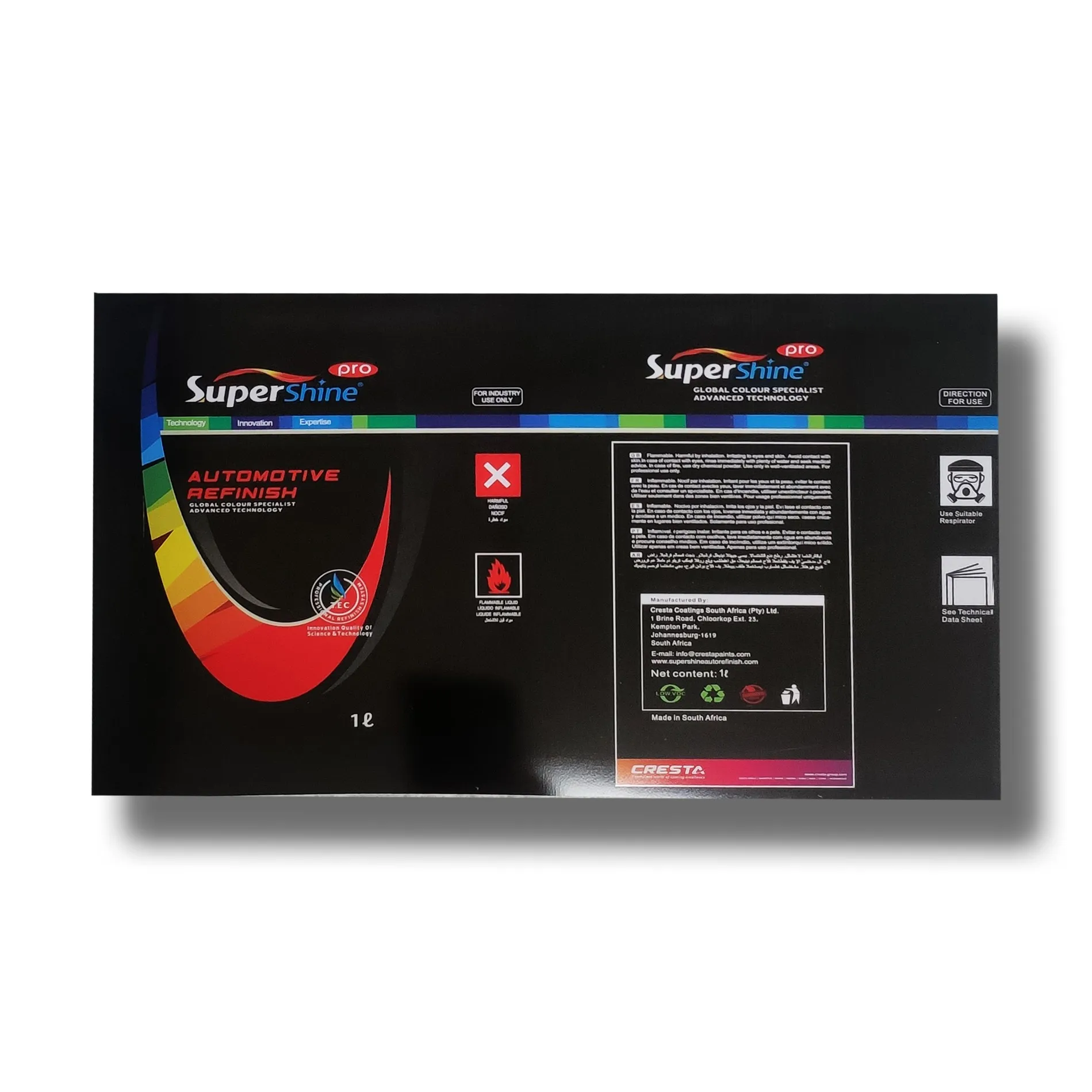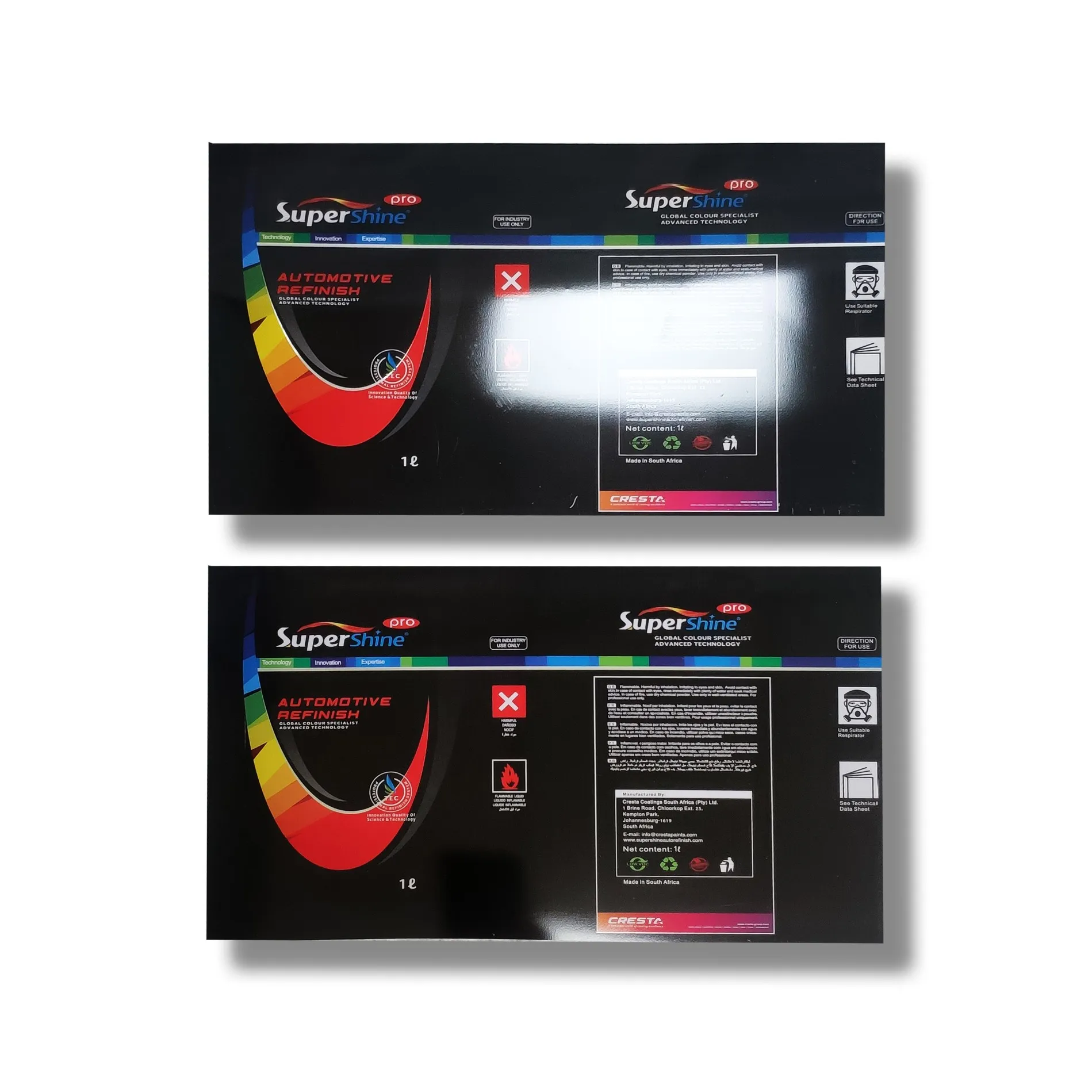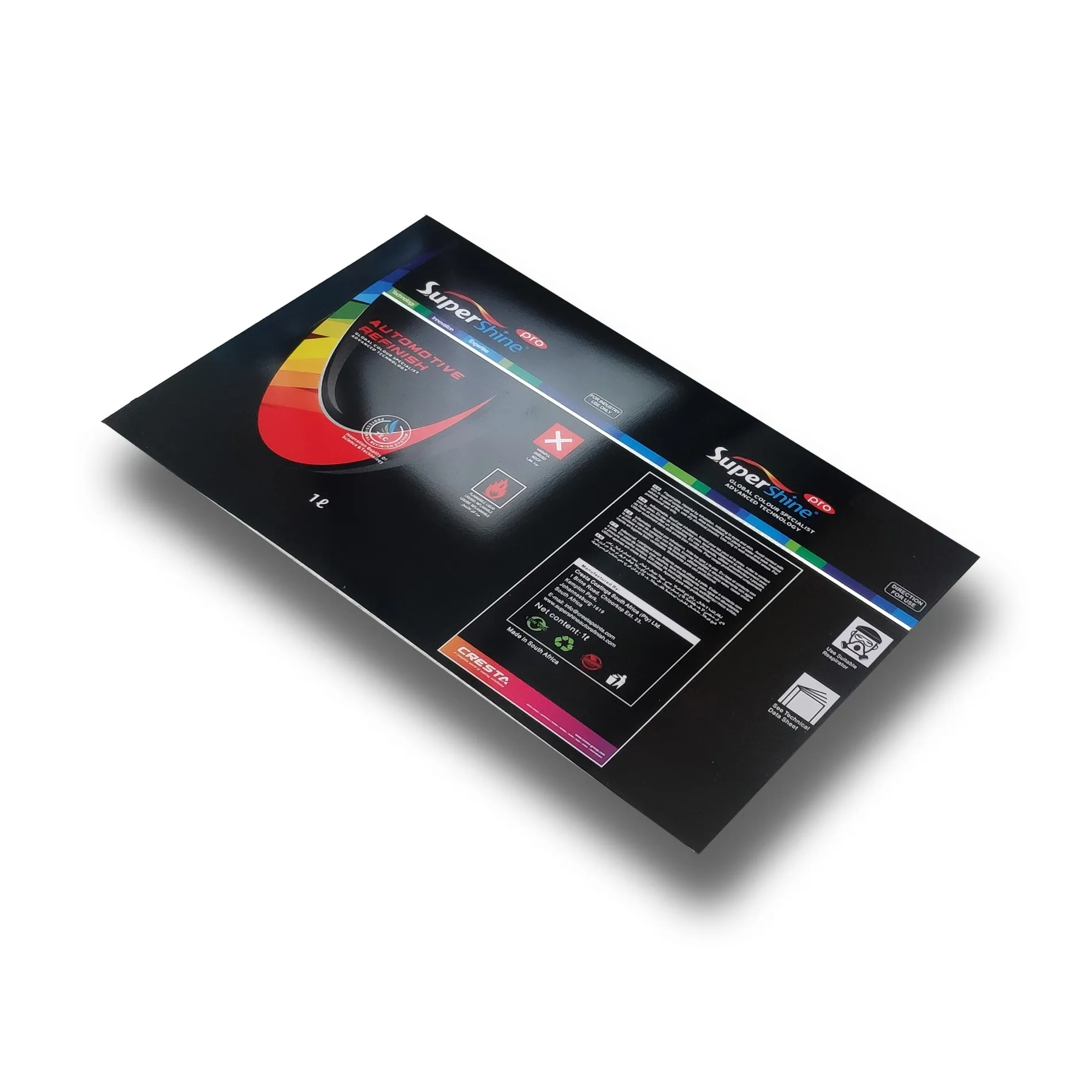As a metal material with both anti-corrosion properties and plasticity, tinplate sheet is widely used in packaging manufacturing in the food, beverage, chemical and other industries. The tin coating on its surface not only prevents the steel from rusting, but also provides a good printing foundation, making it an ideal choice for making color printed packaging. In order to ensure the printing effect and the long-term performance of the packaging, it is crucial to choose the right ink for printing tinplate.
This article will discuss in detail how to choose the right ink for printing tinplate, focusing on key issues such as ink performance requirements, process adaptability and material compatibility under different printing conditions.

What is tinplate printing?
Before choosing the right ink, you first need to understand the characteristics of tinplate printing. Compared with common printing materials such as paper or plastic, tinplate has hard, smooth and impermeable surface characteristics. These characteristics bring certain challenges to the adhesion and drying of ink. At the same time, tinplate is usually used to make packaging such as food or beverage cans, so the printing ink must not only have excellent adhesion and durability, but also meet strict food safety standards.
Tinplate printing usually adopts processes such as lithography or gravure printing. In these processes, the ink needs to be specially formulated to adapt to the characteristics of the metal material. After printing, tinplate sheet is usually baked at high temperature or heat-cured to further enhance the adhesion and wear resistance of the ink. Therefore, when selecting ink, special attention should be paid to key properties such as heat resistance, adhesion and drying speed.
How to choose ink suitable for printing tinplate?
Key factors for selecting ink suitable for tinplate printing:
1. Adhesion of ink
2. Heat resistance of ink
3. Chemical resistance of ink
4. Gloss and color performance of ink
5. Drying speed of ink
6. Environmental protection and safety of ink
Adhesion of ink
The surface of tinplate is smooth and hard, and the adhesion of ink on its surface is poor. Therefore, the adhesion of ink is the first key factor to be considered when selecting ink. The ink must be able to adhere firmly to the surface of tinplate to avoid problems such as peeling, falling off or blurred printed patterns.
● Adhesion test: Before printing, the adaptability of the ink can be verified by performing an adhesion test. Scratch test or peel test is usually used to check the adhesion of ink on tinplate sheet surface.
● Surface treatment: To improve the adhesion of ink, the tinplate sheet surface usually needs to be pre-treated, such as corona treatment or sandblasting. These processes can increase the roughness of the tinplate surface, thereby enhancing the adhesion of the ink.
Heat resistance of ink
Tinplate printing usually undergoes baking or heat curing process, and the temperature is usually between 140°C and 200°C. The ink must be able to withstand such high temperatures without fading, deterioration or blistering. Therefore, the heat resistance of the ink is the key to ensure the quality of printing.
● Heat resistance test: The ink printed sample can be placed in a high-temperature oven to simulate the baking process and observe the performance of the ink in a high-temperature environment. If the ink changes color or falls off at high temperature, it means that its heat resistance is poor.
● High-temperature curing ink: In order to adapt to the high-temperature baking process, inks with high-temperature resistance are usually selected. For example, epoxy resin inks or thermosetting inks can maintain stable physical and chemical properties in a high-temperature environment.
Chemical resistance of ink
Tinplate packaging is often used to carry food, beverages or chemicals, so the ink needs to have excellent chemical resistance to prevent the printed layer from being corroded or eroded by the contents of the package. The ink must remain stable when in contact with acid, alkali or other chemicals, and must not dissolve or fade.
● Food safety requirements: Especially for tinplate sheet used for food and beverage packaging, the ink must meet the safety standards of food contact materials to avoid harmful substances from penetrating into food. Printing inks should be certified by the FDA (US Food and Drug Administration) or EU food safety standards.
● Chemical resistance test: The printed tinplate samples can be exposed to chemical reagents such as acids, alkalis, and solvents to test the chemical resistance of the ink. If the ink changes color or peels off, a more chemically resistant formula needs to be selected.
Gloss and color performance of ink
Tinplate packaging usually needs to have bright colors and a bright surface effect, so the gloss and color performance of the ink are also important considerations when selecting. The color reproduction and vividness of the ink directly affect the visual effect of the printed pattern, especially when used for tinplate printing of brand logos and product packaging, the ink is required to have excellent color saturation and contrast.
● Color formula: Ink manufacturers usually adjust the color formula of the ink according to customer needs to ensure that the printed color is consistent with the design artwork.
● Gloss adjustment: In order to obtain high gloss or matte effects, the surface treatment and formula design of the ink need special attention. Certain specific coatings can increase the gloss of the printed surface or reduce reflections through matte treatment.
Ink drying speed
In the tinplate printing process, the drying speed of the ink affects the production efficiency and printing quality. Too fast drying speed may cause the ink to fail to spread fully, resulting in uneven printing; while too slow drying speed may cause the printed product to stick together, affecting the smooth progress of subsequent processes. Therefore, it is very important to choose ink with an appropriate drying speed.
● Solvent volatile ink: This type of ink relies on the evaporation of the solvent to achieve drying, and is usually suitable for production lines with faster printing speeds. The speed of volatile drying can be controlled by adjusting the solvent composition.
● Thermosetting ink: Thermosetting ink accelerates curing by heating and is suitable for high-temperature baking processes. It usually dries quickly under high temperature conditions and is suitable for tinplate printing that requires fast curing.
Environmental protection and safety of ink
Environmental protection and safety are another key factor that must be considered when choosing tinplate printing inks, especially when it comes to food, medicine and cosmetic packaging. The composition of the ink must meet strict environmental standards and cannot contain toxic and harmful substances, such as heavy metals such as lead, cadmium, and mercury.
● Low VOC ink: Volatile organic compounds (VOC) are common pollutants in inks. Choosing low VOC or no VOC inks can not only reduce the impact on the environment, but also improve the air quality of the printing workshop.
● Non-toxic certification: Tinplate sheet inks used for food packaging should pass strict non-toxicity tests to ensure that the ink will not cause harm to human health. The composition of the printing ink must meet regulatory requirements to avoid the migration of harmful substances into the packaging contents.

What are the types of tinplate printing inks?
Types of tinplate printing inks:
1. Solvent-based inks
2. Thermosetting inks
3. UV-curable (UV) inks
4. Water-based inks
Depending on different process requirements and usage scenarios, there are many types of tinplate printing inks on the market. The following are the characteristics of these 4 common inks:
Solvent-based inks
Solvent-based inks are a type of ink that dries by evaporation of solvents. It usually has good fluidity and adhesion, and can form a uniform printing layer on the tinplate sheet surface. The advantages of solvent-based inks are fast drying speed and clear printing effect, but volatile organic compounds (VOCs) are released during the volatilization process, which has a certain impact on the environment.
Thermosetting inks
Thermosetting inks are inks that are cured by heating and are usually used in tinplate printing processes that require high-temperature baking. This type of ink has good heat resistance and wear resistance, and the surface hardness after printing is high, which is suitable for long-term packaging. Thermosetting inks also have superior chemical resistance and adhesion, so they are often used in food cans or chemical packaging.
UV curable (UV) ink
UV ink is fast cured by ultraviolet irradiation, with extremely fast drying speed and excellent adhesion. Compared with traditional solvent-based inks, UV inks do not require solvent volatilization and are therefore more environmentally friendly. In addition, UV inks have strong color expression and are suitable for high-precision, high-quality tinplate printing. However, the cost of using UV inks is relatively high, and special UV curing equipment is required.
Water-based ink
The main solvent of water-based inks is water, which has low VOC emissions and meets environmental protection requirements. Although water-based inks have relatively poor adhesion on tinplate sheet, their adhesion and drying speed can be improved through special surface treatment and additive formulations. Water-based inks are usually used for packaging printing that requires environmental certification.

How to choose a suitable ink supplier?
In addition to the performance requirements of the ink itself, it is also crucial to choose a reliable ink supplier. The ink supplier should have rich industry experience and technical support, and be able to provide customized solutions according to different printing needs. When choosing an ink supplier, the following points should be considered:
● Technical support: The supplier should be able to provide comprehensive technical support to help solve problems that arise during the printing process, especially in demanding scenarios such as tinplate printing. Technical support is particularly important.
● Product certification: Make sure that the supplier's products have passed relevant certifications, especially safety certifications for food contact materials. The supplier should be able to provide a detailed Material Safety Data Sheet (MSDS) to prove that its inks meet environmental and safety standards.
● Supply chain stability: Choose a supplier with stable supply capabilities to ensure that there will be no delays during the production process due to shortages of raw materials.

